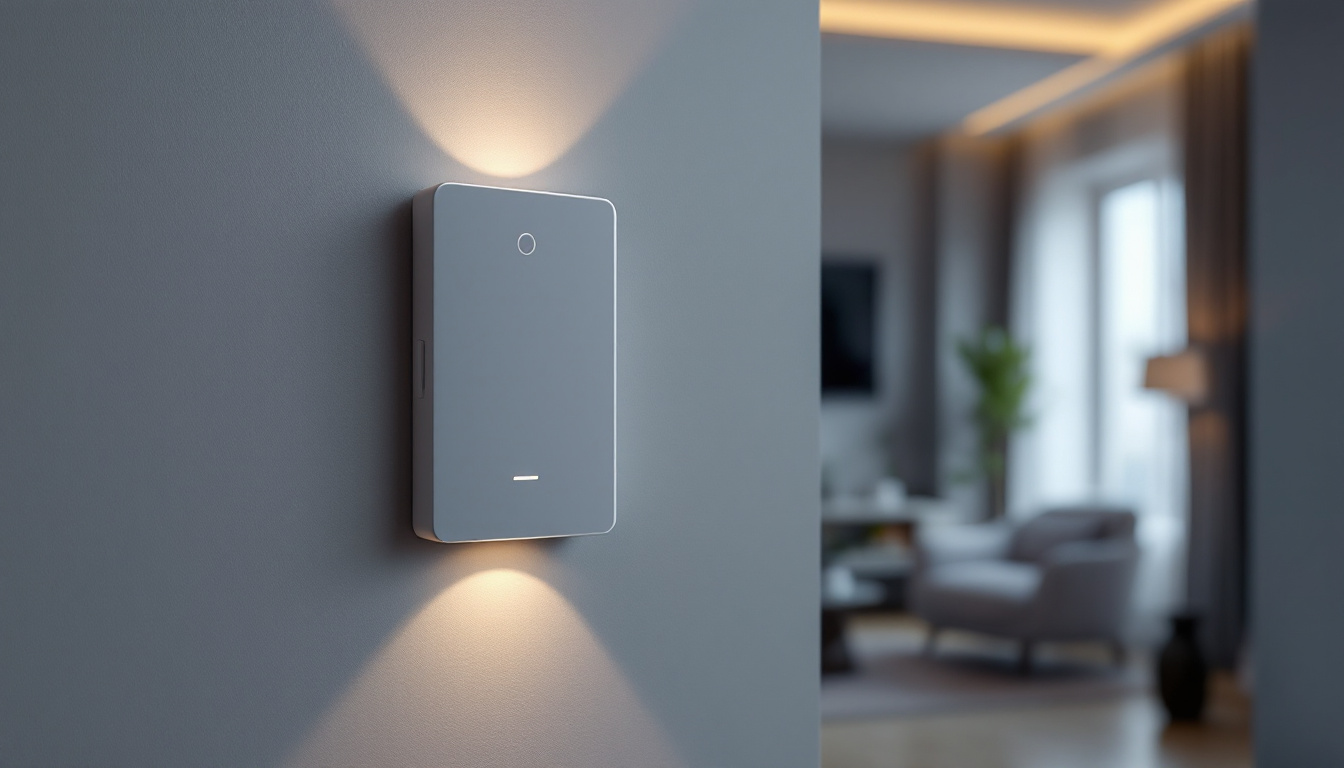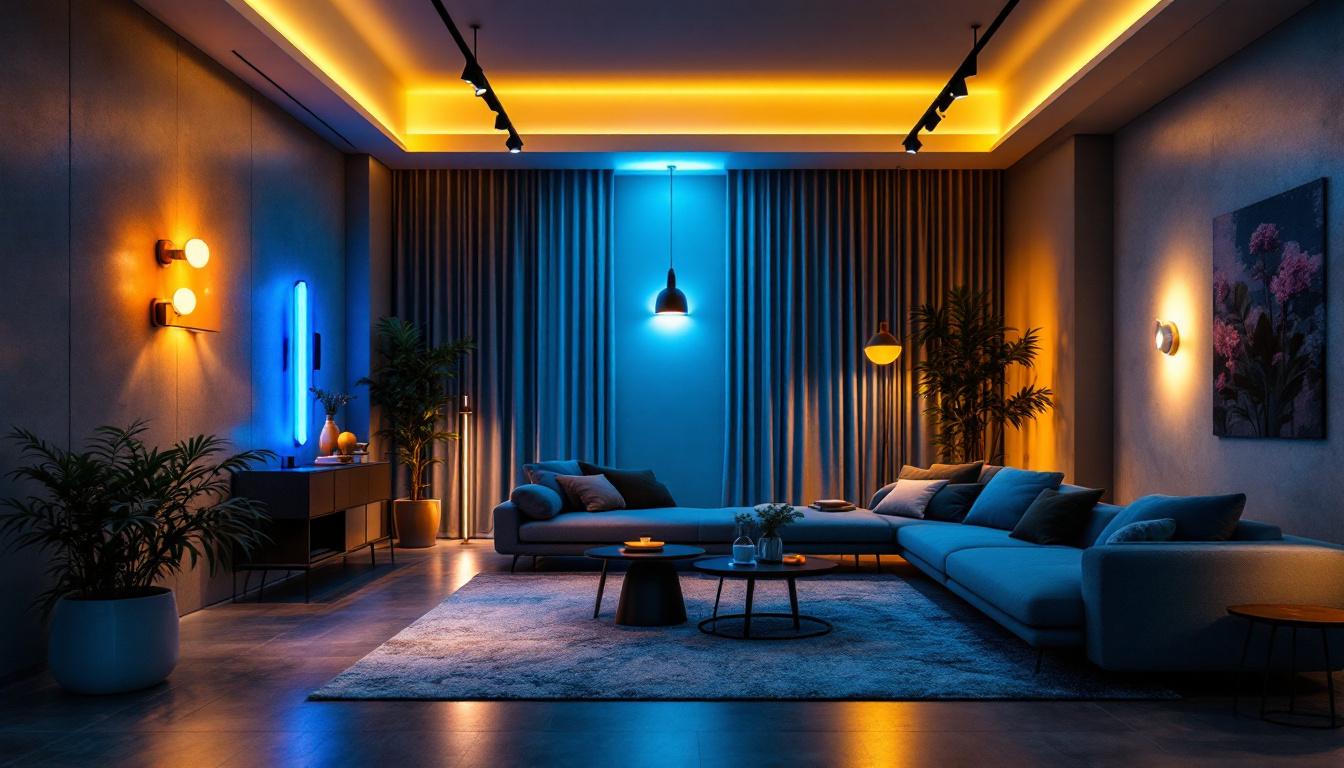
In an era where technology is rapidly evolving, lighting solutions are no exception. Movement sensor light switches have emerged as a popular choice for both residential and commercial spaces, offering enhanced convenience and energy efficiency. For lighting contractors, understanding how to integrate these innovative devices into projects can not only satisfy client demands but also future-proof installations against the ever-changing landscape of smart technology.
Movement sensor technology has gained traction due to its ability to automatically control lighting based on occupancy. This feature not only enhances user convenience but also contributes to energy savings by ensuring lights are only on when needed. As consumers become more environmentally conscious, the demand for energy-efficient solutions continues to rise. The shift towards sustainability has prompted manufacturers to innovate and improve the efficiency of these sensors, leading to advancements such as smart dimming capabilities and adaptive lighting that adjusts based on the time of day or ambient light levels.
Moreover, the integration of movement sensors into lighting systems aligns with the growing trend of smart homes and buildings. These systems can communicate with other smart devices, creating a cohesive and automated environment that enhances comfort and security. For example, when a person enters a room, the movement sensor can trigger not only the lights but also adjust the thermostat or play music, creating a personalized atmosphere. This interconnectedness not only streamlines daily routines but also allows for remote control and monitoring through smartphones, providing users with unprecedented flexibility and control over their living spaces.
Understanding the different types of movement sensors available is crucial for contractors looking to implement these solutions effectively. The two primary types are passive infrared (PIR) sensors and ultrasonic sensors. PIR sensors detect changes in infrared radiation, making them ideal for detecting human presence. On the other hand, ultrasonic sensors emit sound waves and measure their reflection to identify movement, making them suitable for larger areas. In addition to these, there are also dual-technology sensors that combine both PIR and ultrasonic technologies, offering enhanced accuracy and reducing false alarms by requiring both types of detection to trigger the lights.
Each type has its advantages and disadvantages, and selecting the right one depends on the specific requirements of the project. For instance, PIR sensors are generally more cost-effective and energy-efficient, while ultrasonic sensors can cover larger spaces and detect movement through obstacles. This makes ultrasonic sensors particularly valuable in environments with complex layouts, such as warehouses or multi-room offices, where traditional PIR sensors might struggle to maintain coverage. Understanding the nuances of each technology allows contractors to tailor their solutions to best fit the needs of their clients.
Movement sensor light switches can be employed in a variety of settings, from residential homes to commercial buildings. In residential applications, they can be used in hallways, bathrooms, and garages, providing convenience and safety for homeowners. In commercial settings, these sensors can enhance security in offices, warehouses, and retail spaces by ensuring that lights are activated when someone enters a room. Furthermore, the ability to program these sensors for specific times or situations, such as during business hours or after dark, adds an additional layer of customization that can optimize energy use and operational efficiency.
Additionally, integrating movement sensors into outdoor lighting can improve safety and security, deterring potential intruders while providing illumination for pathways and entrances. The versatility of these devices makes them an excellent addition to any lighting project. Beyond security, outdoor movement sensors can also enhance the ambiance of outdoor spaces, such as gardens and patios, by automatically illuminating areas when someone approaches, creating a welcoming environment for guests. As technology continues to evolve, the potential applications for movement sensors are expanding, paving the way for smarter, more responsive environments that cater to the needs of users in real-time.
Incorporating movement sensor light switches into lighting projects offers numerous benefits that extend beyond mere convenience. These advantages can significantly impact both the client experience and the contractor’s reputation.
One of the most compelling reasons to use movement sensor light switches is their contribution to energy efficiency. By ensuring that lights are only on when necessary, these devices can lead to substantial reductions in energy consumption. This not only benefits the environment but also translates to lower utility bills for clients.
Moreover, many utility companies offer incentives for energy-efficient upgrades, which can further enhance the appeal of projects that incorporate movement sensors. Contractors can leverage these incentives to provide additional value to their clients, making their services more attractive in a competitive market.
Movement sensors play a crucial role in enhancing safety and security in various environments. By automatically illuminating spaces when someone enters, they reduce the risk of accidents in dark areas, such as stairwells and hallways. This feature is particularly beneficial for elderly individuals or those with mobility challenges.
In commercial settings, the presence of movement sensors can deter unauthorized access and enhance overall security. When combined with surveillance systems, these sensors can create a comprehensive security solution that offers peace of mind to business owners.
As technology continues to advance, the importance of future-proofing lighting projects cannot be overstated. Contractors must consider how to integrate movement sensor light switches in a way that accommodates future developments in smart technology.
One of the key aspects of future-proofing is ensuring compatibility with existing and emerging smart home systems. Many consumers are investing in smart home technology, and lighting solutions that can seamlessly integrate with these systems will be more appealing.
When selecting movement sensor light switches, contractors should look for devices that support popular smart home protocols, such as Zigbee, Z-Wave, or Wi-Fi. This compatibility allows for easy integration with other smart devices, enabling homeowners to control their lighting through a central hub or mobile app.
Future-proofing also involves considering the scalability and upgradability of lighting systems. As technology evolves, new features and functionalities may become available, and clients may want to upgrade their systems without a complete overhaul.
Contractors should recommend movement sensor light switches that allow for easy upgrades, such as firmware updates or the addition of new sensors. This approach not only enhances the longevity of the installation but also ensures that clients can adapt their systems to meet changing needs.
Proper installation of movement sensor light switches is crucial for maximizing their effectiveness. Contractors should be aware of several key factors that can influence the performance of these devices.
The placement of movement sensors is critical to their functionality. Sensors should be installed in locations that provide optimal coverage for the intended area. For instance, in a hallway, the sensor should be positioned to detect movement from both ends, ensuring that lights activate as soon as someone enters.
Additionally, contractors should consider the height at which sensors are mounted. Installing them too high may limit their ability to detect movement, while placing them too low can lead to false activations. A careful assessment of the space is essential to determine the best placement for maximum efficiency.
When installing movement sensor light switches, it is important to ensure compatibility with existing wiring and fixtures. Contractors should verify that the electrical system can support the new devices, especially if they incorporate advanced features or require specific voltage levels.
Understanding the wiring configuration is also essential for proper installation. Some movement sensor switches may require a neutral wire, while others may not. Familiarity with local electrical codes and regulations is crucial to ensure compliance and safety during installation.
Like any technology, movement sensor light switches require periodic maintenance to ensure optimal performance. Contractors should educate clients on basic maintenance practices to prolong the life of their lighting systems.
Dust and debris can accumulate on movement sensors, affecting their ability to detect movement accurately. Regular cleaning of the sensor lenses and surrounding areas can help maintain their functionality. Clients should be advised to periodically inspect the sensors for any signs of wear or damage.
Additionally, checking the alignment of sensors is important, as misalignment can lead to reduced effectiveness. If a sensor is not detecting movement as expected, a simple adjustment may resolve the issue.
Contractors should be prepared to assist clients with common issues that may arise with movement sensor light switches. For instance, if lights are not activating as expected, it may be due to improper placement or obstructions that block the sensor’s line of sight.
Educating clients on how to troubleshoot minor issues can empower them to resolve problems quickly, enhancing their overall satisfaction with the lighting system. Providing clear documentation or instructional materials can also be beneficial in guiding clients through basic troubleshooting steps.
Movement sensor light switches represent a significant advancement in lighting technology, offering numerous benefits for both contractors and clients. By understanding the various types of sensors, their applications, and the importance of future-proofing, lighting contractors can enhance their service offerings and meet the evolving needs of their clients.
As the demand for smart lighting solutions continues to grow, integrating movement sensors into projects will not only provide immediate advantages but also position contractors as forward-thinking professionals in the industry. By focusing on compatibility, scalability, and proper installation practices, contractors can ensure that their lighting projects are not only functional but also ready for the future.
In a world where technology is constantly changing, embracing innovation in lighting solutions is essential. Movement sensor light switches are not just a trend; they are a key component of modern lighting design that can lead to enhanced energy efficiency, safety, and convenience for clients.
Ready to elevate your lighting projects with the latest movement sensor light switches? At LumenWholesale, we provide contractors with the high-quality, spec-grade lighting products you need to stay ahead of the curve. With our competitive wholesale pricing and commitment to cutting out the middleman, you can trust that you’re getting the best value for your investment. Our extensive selection is designed to meet the highest industry standards, ensuring reliability and performance for every installation. Plus, with the convenience of free shipping on bulk orders, you can stock up on premium lighting solutions without worrying about hidden fees. Don’t compromise on quality or affordability—choose LumenWholesale for a seamless blend of both. Take the next step towards future-proofing your lighting projects by visiting our website and exploring our range of products. Wholesale Lighting at the Best Value is just a click away.

Discover how LED work lights for trucks are revolutionizing the lighting industry, enhancing visibility, efficiency, and safety for contractors on the go.
Discover how electrical washers can be a game-changer for lighting contractors seeking to win more bids.

Discover the ultimate checklist for lighting contractors working with COB LED lights.

Explore the transformative impact of LED lighting on modern design and installation practices.